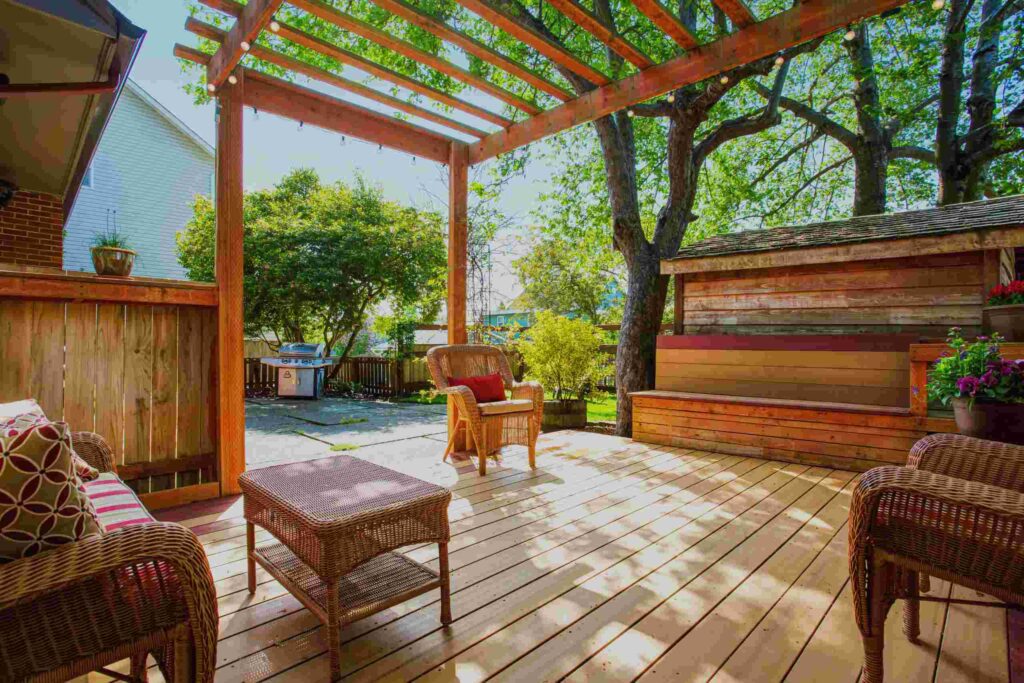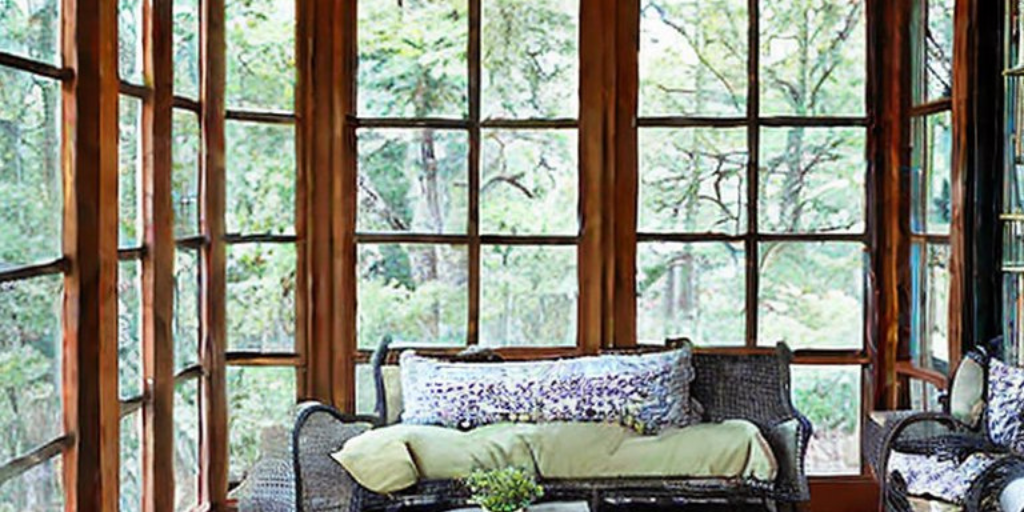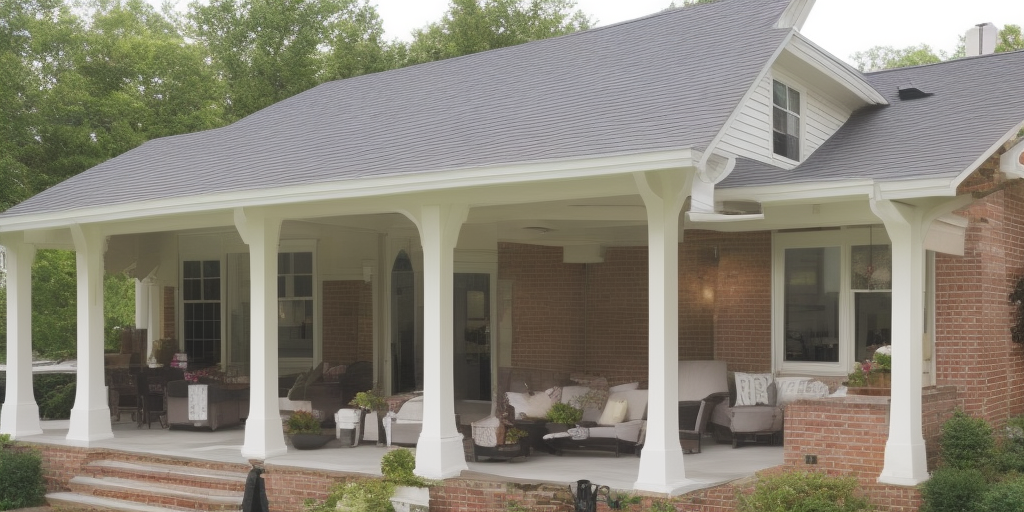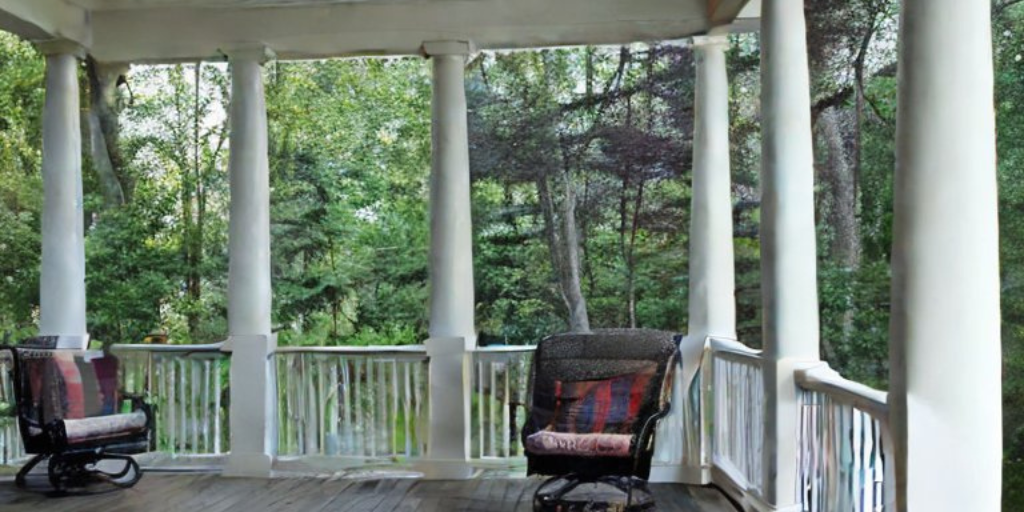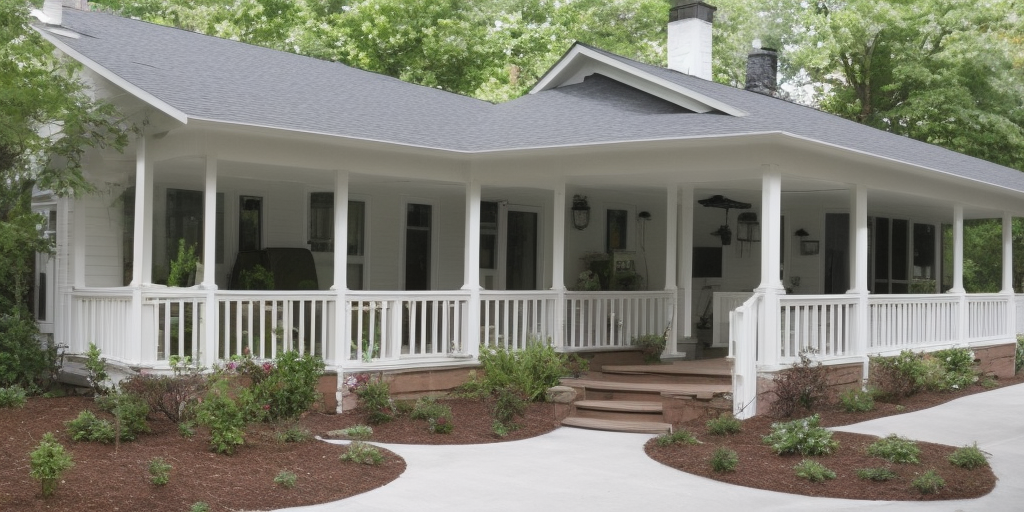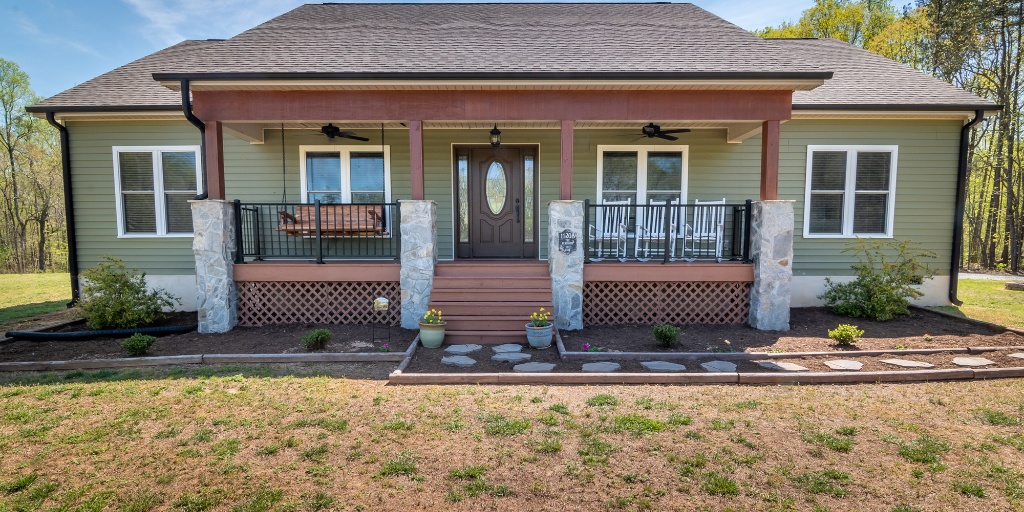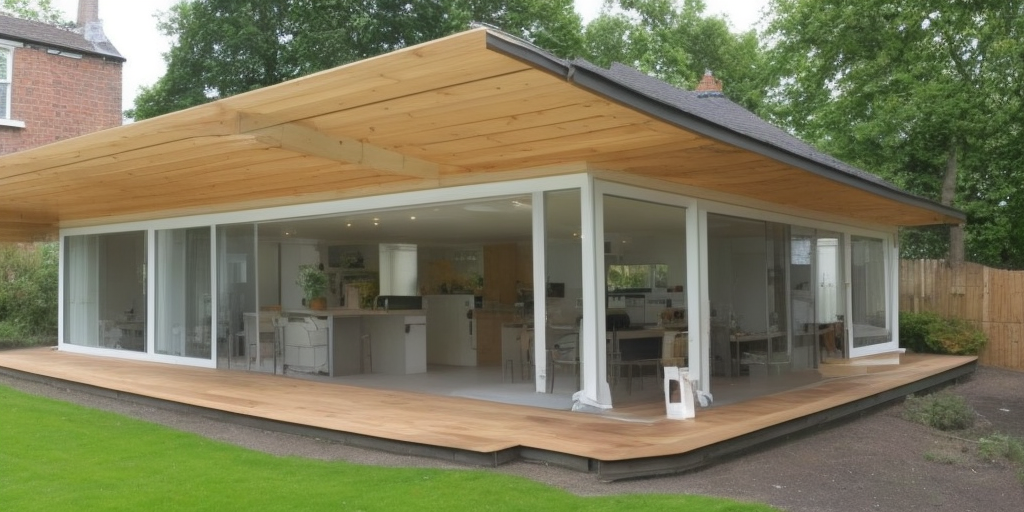Creating an outdoor living space is a wonderful way to expand your home’s usable square footage, enhance your property’s aesthetic appeal, and increase its value. When it comes to designing this space, one of the first decisions you’ll need to make is whether to build a deck or a patio. Both options have their own unique advantages, and the right choice for your home will depend on a variety of factors including your budget, the layout of your yard, and your personal preferences.
In this blog post, we’ll compare decks and patios in detail, exploring the pros and cons of each option. By the end, you’ll have a clearer understanding of which outdoor space is the best fit for your home and lifestyle.
1. Understanding the Basics: What’s the Difference?
Contents
Before diving into the comparison, it’s important to understand the fundamental differences between a deck and a patio.
Deck:
A deck is a raised platform that is typically made of wood or composite materials. It is usually attached to the house, often extending from the back door or leading off from another room. Decks are constructed above ground level and may require a support structure, such as posts and beams. They can be built at various levels and may include features like railings, steps, and builtin seating.
Patio:
A patio, on the other hand, is a flat, groundlevel surface made from materials like concrete, stone, pavers, or bricks. Patios are typically not attached to the house and can be placed anywhere in the yard. They are versatile in terms of design and can be created in any shape or size. Patios are often used for dining, lounging, and entertaining, and may include features like fire pits, outdoor kitchens, or garden beds.
2. Cost Considerations: What Fits Your Budget?
Cost is often one of the most significant factors when deciding between a deck and a patio. The overall expense will depend on the materials used, the size of the structure, and the complexity of the design.
Cost of Building a Deck:
Decks tend to be more expensive to build than patios, primarily due to the cost of materials and the labor involved in constructing a raised structure. The average cost of building a deck ranges from $15 to $35 per square foot, depending on the materials used. Wood decks, particularly those made from highend woods like cedar or redwood, can be quite pricey. Composite materials, while more durable and lowmaintenance, can also be expensive.
In addition to the initial construction costs, you’ll need to factor in ongoing maintenance costs. Wood decks require regular staining or sealing to protect them from the elements, which adds to the longterm expense.
Cost of Building a Patio:
Patios are generally more affordable to build than decks, with costs typically ranging from $5 to $20 per square foot. The exact price will depend on the materials chosen—concrete is often the least expensive option, while natural stone or custom pavers can be more costly.
Patios also tend to have lower maintenance costs than decks. Materials like concrete or stone are durable and require minimal upkeep, making patios a costeffective option in the long run.
Bottom Line:
If you’re working with a tight budget, a patio may be the more affordable option. However, if you’re looking for an elevated, multilevel outdoor space, a deck might be worth the additional investment.
3. Design Flexibility: What Complements Your Home?
When it comes to design, both decks and patios offer a great deal of flexibility, but they each have their strengths depending on the look and functionality you’re aiming for.
Design Flexibility of a Deck:
Decks offer a wide range of design possibilities, especially if your yard has uneven terrain or if you want to create multiple levels. You can customize your deck with builtin seating, planters, and even hot tubs. Decks can be designed to flow seamlessly from indoor living spaces, creating a cohesive indooroutdoor experience. Because they are elevated, decks can offer better views and can be built around existing landscape features like trees.
Design Flexibility of a Patio:
Patios are incredibly versatile and can be designed to fit any shape or size. They can be placed in any part of the yard, making them ideal for creating a quiet, secluded retreat or an open, sunfilled entertainment area. Patios are also easy to integrate with the surrounding landscape, allowing for creative combinations of hardscaping and greenery. With a patio, you can choose from a variety of materials and patterns, making it easy to complement the architectural style of your home.
Bottom Line:
If you have a sloped yard or want to maximize views, a deck might be the better choice. If you’re looking for a versatile space that blends seamlessly with your landscaping, a patio could be the way to go.
4. Maintenance and Longevity: What’s Easier to Care For?
The amount of maintenance required and the longevity of your outdoor space are important considerations, especially if you’re looking for a lowmaintenance solution.
Maintenance of a Deck:
Decks, especially those made of wood, require regular maintenance to prevent weathering, rot, and insect damage. This includes annual staining or sealing, as well as periodic cleaning and inspections for any needed repairs. Composite decking materials are more durable and require less maintenance than wood, but they can still fade or scratch over time.
Maintenance of a Patio:
Patios are generally lower maintenance than decks. Materials like concrete, stone, or pavers are highly durable and can withstand the elements with minimal upkeep. You may need to periodically clean the surface and reapply sealant to prevent staining or cracking, but these tasks are relatively easy compared to the maintenance required for a deck.
Longevity:
Both decks and patios can last for many years with proper care, but patios generally have a longer lifespan due to their durable materials and groundlevel construction. A wellmaintained patio can last for decades, while a wood deck may need to be replaced or extensively repaired after 1015 years.
Bottom Line:
If you prefer a lowmaintenance outdoor space, a patio is likely the better option. However, if you’re willing to invest time in upkeep for a more elevated and customizable space, a deck could be worth the effort.
5. Climate and Environment: What Works Best in Your Area?
The climate and environment of your location can significantly influence the performance and longevity of your outdoor space.
Decks in Various Climates:
Decks can be a great option in climates with mild weather, but they may not perform as well in areas with extreme heat, heavy rainfall, or high humidity. Wood decks are particularly susceptible to moisture damage and may require more frequent maintenance in wet or humid environments. In areas with heavy snowfall, the weight of snow accumulation can also be a concern for deck structures.
Patios in Various Climates:
Patios are better suited for a wider range of climates. They are more resilient to weather fluctuations and can handle extreme temperatures, heavy rain, and even snow without significant damage. In hot climates, a concrete or stone patio can help keep the area cooler, as these materials tend to absorb and radiate less heat than wood.
Bottom Line:
If you live in an area with harsh weather conditions, a patio may be the more durable and practical choice. However, if your climate is mild and you’re set on the look and feel of a deck, you can still make it work with proper materials and maintenance.
6. Permits and Regulations: What Are the Requirements?
Before you start building, it’s important to check local building codes and regulations. In many areas, decks and patios are subject to different permit requirements and construction standards.
Decks:
Because decks are raised structures, they often require building permits and must meet specific safety regulations, such as those related to railing height, stair dimensions, and loadbearing capacity. The permitting process can add time and cost to your project, so it’s important to factor this in when planning.
Patios:
Patios, being groundlevel structures, typically have fewer regulatory requirements. In many areas, you won’t need a permit to build a patio, making the process faster and more straightforward. However, it’s still a good idea to check with your local building authority to ensure compliance with any relevant codes or zoning laws.
Bottom Line:
If you want to avoid the hassle of permits and complex regulations, a patio might be the easier option. However, if you’re prepared to navigate the permitting process for a more elevated design, a deck could be worth it.
7. Making Your Decision: Deck or Patio?
Choosing between a deck and a patio ultimately comes down to your specific needs, preferences, and budget. Here’s a quick recap to help you decide:
BudgetFriendly Option: If you’re on a budget, a patio is typically more affordable and requires less maintenance over time.
Design Flexibility: If you have a sloped yard or want an elevated view, a deck offers more design flexibility and customization options.
Low Maintenance: If you prefer a lowmaintenance solution that can withstand various climates, a patio is likely the better choice.
Elevated Aesthetic: If you’re looking for a more elevated and luxurious outdoor space, a deck might be worth the extra cost and effort.
8. Create Your Perfect Outdoor Space
Both decks and patios offer unique benefits and can enhance your outdoor living experience. The right choice for your home depends on your budget, design preferences, and how you plan to use the space. Whether you choose a deck or a patio, the most important thing is to create an outdoor area that you and your family will enjoy for years to come.
Take the time to carefully consider your options, consult with professionals if needed, and don’t be afraid to get creative with your design. With the right planning and execution, your new outdoor space will become a beautiful and functional extension of your home.
